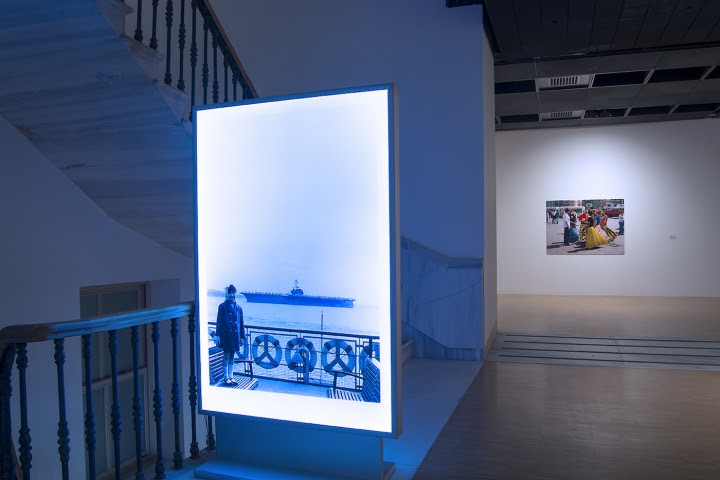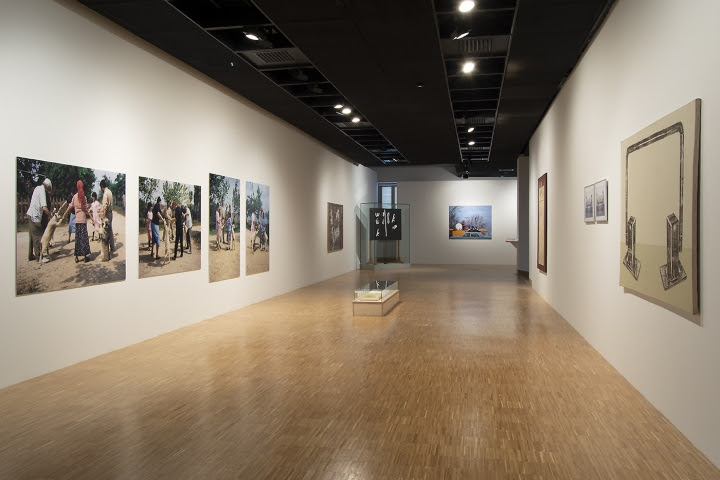When SALT Beyoğlu closed in January 2016 under the auspices of “technical reasons,” many speculated this was code for the censorship one of Turkey’s most progressive cultural institutions. In such a censorious country — which currently accounts for one third of all imprisoned journalists worldwide and where artists, filmmakers, theater directors, and musicians continue to be persecuted — it comes as no surprise that many suspected SALT Beyoğlu had closed for reasons that were not merely “technical.”
However, a lot can happen in two years, especially in Turkey. In October 2016, SALT’s founding director of research and programs, Vasif Kortun, abruptly announced his retirement. A few months later, it was announced that November Paynter, the British-born curator specializing in contemporary art, was also departing from SALT, leaving the institution without any senior specialists in contemporary art. In January 2017, it was announced that associate director Meriç Öner had been appointed to take Kortun’s place as director of research and programs. Öner came to SALT after working with Pelin Derviş at Garanti Gallery, one of the three institutions — along with Platform Garanti and the Ottoman Imperial Bank Museum & Archives — that merged to create SALT in 2011.
SALT started out as a school that housed Kortun’s personal library, later evolving into one of Istanbul’s most important spaces for contemporary art. Under Kortun’s leadership, SALT Beyoğlu largely eschewed the established tastes of the Turkey’s art scene, testing out alternative formats for art presentation, debate, research and cultural exchange. He moved toward the inclusion of parallel narratives, using formats like storytelling to develop critical exhibition themes around subjects like state violence, cultural memory, urbanism, and social research presented under the veneer of art.
Most importantly, Kortun challenged existing hierarchies within the Turkish art scene by insisting on presenting artists and works emanating from different social classes, geographies, and identities, mediating exhibition narratives through social, political, and economic perspectives. Under Kortun, SALT organized challenging exhibitions about urbanism and cultural life, including exhibitions featuring Turkey’s minorities (such as works by Kurdish artists). During this time, SALT also became quite vocal and critical of the government, an unthinkable position for any institution operating within Turkey today. On June 13, 2013, shortly after the occupation of Gezi Park, Kortun — who was still the director of SALT at the time — wrote:
It is not a hidden fact that [Erdoğan] has an inimitable disdain for cultural production that he has come to believe is elitist, exclusionist, and/or Western. Erdoğan approaches it with the idiolect and fury of a young disadvantaged male from the suburbs. He is angry at the cultural base of the secularist early Republic; he is angry at the left-leaning ’60s and ’70s generations; and he is angry at the nonpartial cultural practitioners of the post-dictatorship years. Erdoğan is distraught because he has not been able to invent a cultural offering. The question is: Does the [Justice and Development Party] understand that culture is not an efficient and quantifiable form of production — it is not like making bread. Rather, it just happens as it has been happening every single day in Gezi Park over the last three weeks. It is authentic and unannounced. It produces a surplus from a gap — one that wasn’t known to exist before.
SALT’s primary funder is Garanti Bank, one of the biggest financial institutions in Turkey. According to HG Masters writing in ArtAsiaPacific, Garanti “appears to have negotiated for [SALT Beyoğlu’s] reopening on the condition that the building conforms to the historical building codes.” Notably, this only happened after Kortun and Paynter had announced their departures. (Kortun remains on SALT’s board of directors.) At the time of the 2016 closure, Kortun denied rumors that SALT Beyoğlu had shuttered due to censorship or political pressure. “We have three buildings out of which SALT Beyoğlu is one,” he told artnet News. “There are permits we have to attain before resuming programs [at SALT Beyoğlu] which I expect will not [be obtained] before the end of the year. I cannot speculate if there are other reasons behind the closure.”
Nevertheless, Kortun did acknowledge the challenges of working in an environment where the government is exerting more and more control over cultural institutions, the media and academia. “Fascism has received a facelift and it is turbocharged by a hedonistic neoliberalism,” he said at the time of the closure. “I am regularly in contact with museum colleagues and we are deeply worried that the worst is yet to come.”
* * *
Under Kortun, SALT Beyoğlu had become a place of provocation, a place where art was not afraid to explore critical or social issues. In the years since the Gezi Park uprising, Turkey has dramatically curtailed freedom of speech and expression, clamping down on any and all opposition, including among those working in the arts. There are some independent spaces and artists who continue to operate, often at significant risk. Spaces like OJ Art Space, DEPO and Mars are notable exceptions, as are artists like Erkan Özgen, Ferhat Özgür, and Pınar Öğrenci, resisting the pervasive pressure to self-censor. But these artists and spaces are becoming exceptions rather than the norm, their operations — and their personal freedoms — under increasing scrutiny of being seized and squashed at any moment.
In October 2017, the Turkish arts patron Osman Kavala was arrested and charged with being one of the principal organizers of the Gezi Park demonstrations, as well as supporting Fethullah Gülen, whom the Erdoğan government considers part of a vast terrorist group conspiring to overthrow the Justice and Development Party (something both Gülen and Kavala deny). Since his arrest, Kavala remains in a Turkish prison along with hundreds thousands of others swept up in government raids meant to consolidate Erdoğan’s totalitarian grip on power. In 2002, 15 years before his arrest, Kavala helped establish Anadolu Kültür, a charitable foundation that funds cultural centers and programs in underdeveloped regions of Turkey while also fostering cultural cooperation between countries and groups in the European Union, including notably the Goethe-Institut. Kavala’s imprisonment sends a clear message to anyone thinking about using art or culture as platforms that could serve for political criticism.

Installation view of Continuity Error by Aydan Murtezaoğlu and Bülent Şangar at SALT Beyoğlu
According to Corey Robin in a 2017 article for the New Republic, tactics like arresting high-profile individuals promote “self-censorship” through “political fear,” which is not intended to “quell one individual, but to make an example of [them], to send a message to everyone else that they should be careful, or they might be next.” In today’s Turkey, this is the prevailing mood. In the years since Gezi Park, censorship has transformed into its subtler and less detectable variant, self-censorship. Vaguely worded anti-terrorist laws are inconsistently and arbitrarily enforced, fostering chaos and uncertainty. The result is that many artists and curators imagine a red line they cannot cross (some version of which is certainly real, too), and censor their own work for fear of arrest, detainment, or worse. The result being widespread political correctness that leaves little room for cultural or political opposition. This affects writers, reporters, and artists, bankrupting civil discourse, culture, and journalism. From the outside, it’s clear that Turkey’s arts and culture are not exempt from the well-oiled machine of coercion that’s speeding the country toward Erdoğan’s ultimate goal of engineering a docile, self-censoring society.
And while Continuity Error and the reopening of SALT Beyoğlu are certainly noteworthy developments, perhaps they also signal the inability of art to develop meaningful, critical niches of resistance, mirroring the wider condition of self-censorship in Turkey today. Or, in the words of Noam Chomsky: “censorship is never over for those who have experienced it.”




